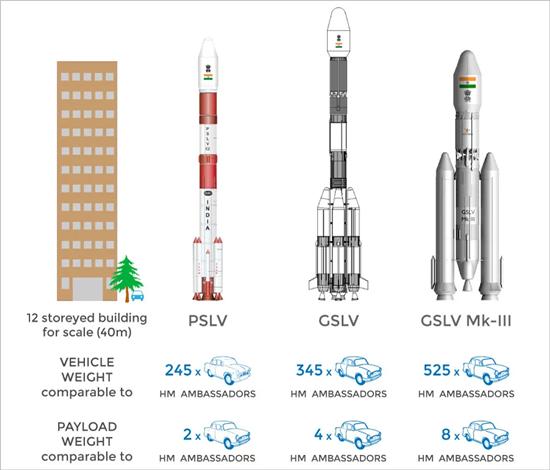GSLV Mark-III set for first flight after Isro’s Saarc satellite launch
02 May 2017
The Indian Space Research Organisation (Isro) has finally come up with the third generation geostationary launch vehicle (GSLV Mark – III), which will help launch heavier payloads of over 4,000 kg into orbit and probably help India send humans into space for the first time.
Isro successfully developed the GSLV Mark-III despite several constraints at its Sriharikota facility, including lack of space and components and the high cost of development.
Isro is now readying the vehicle for its first full flight GSLV Mark - III at the end of this month, roughly three weeks after another flight of the current generation GSLV Mark -II, (GSLV-F0-9), on 5 May.
The first flight of the launch vehicle - GSLV Mark III – will most likely at be the end of this month, after Isro places the Geosynchronous Satellite GSAT-9 (called the Saarc satellite) in orbit.
GSAT-9 is a Geostationary Communication Satellite intended to provide various communication applications in Ku-band with coverage over South Asian countries. GSAT-9 is configured around the Isro's standard I-2K bus, with lift off mass of 2230 kg. The main structure of the satellite is cuboid in shape built around a central cylinder with a mission life of more than 12 years.
GSLV-F09 mission is the eleventh flight of GSLV and its fourth consecutive flight with the indigenous Cryogenic Upper Stage (CUS).
GSLV-F09 will be launched from the Second Launch Pad (SLP) at Satish Dhawan Space Centre SHAR (SDSC SHAR), Sriharikota.
The GSLV Mark III is a complex vehicle and some of its critical technologies had to be developed from scratch. It has used new ideas in its design, manufacturing and this would be the first flight of GSLV III using India's fully-indigenous cryogenic engine.
Isro's cryogenic engine development had hit hurdles and were delayed beyond reasonable measure.

The first flight of GSLV Mark-III will be a developmental flight, which will also mark a major milestone for Isro, in which it will also be using India's cryogenic engine - a reengineered version of the Russian cryogenic engines.
GSLV Mark III has a core liquid stage with twin engines, which is another design novelty.
Isro, meanwhile, is reported to be ready with another ambitious plan to develop technology that will enable two separate spaceships to connect in orbit and reassign material, including human beings between them - a technology that can be used for putting human beings in space.
Described as ''Spacecraft Docking & Berthing'', the new mission will not only revolutionise the existing technology of the Indian Space Research Organisation but also will revitalise the global space industry, by paving new paths for advanced deep space exploration programmes and manned missions.
This new technology, developed by Isro will enable the agency to connect two space vehicles in the orbit and shipping material between them to space. The mission already has been sanctioned by the Department Of Space with a funding of Rs10 crore.
The technology once developed fully, will eventually allow Isro to conduct manned missions to space. However, the immediate goal of the programme is to facilitate the replenishing of spacecraft to confer them an extended existence and transport other vital systems from earth to orbit more efficiently.













.jpg)






.jpg)









